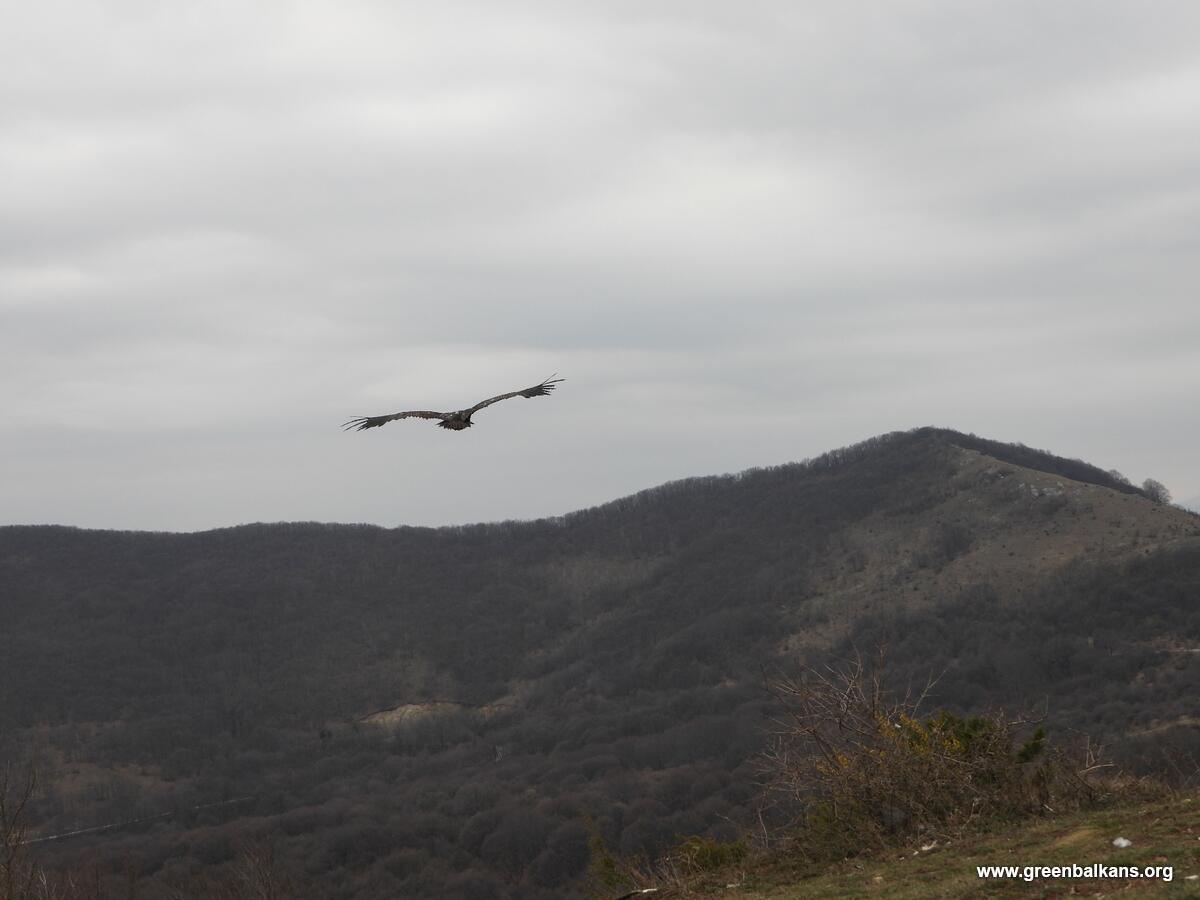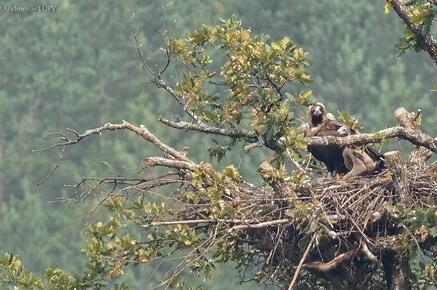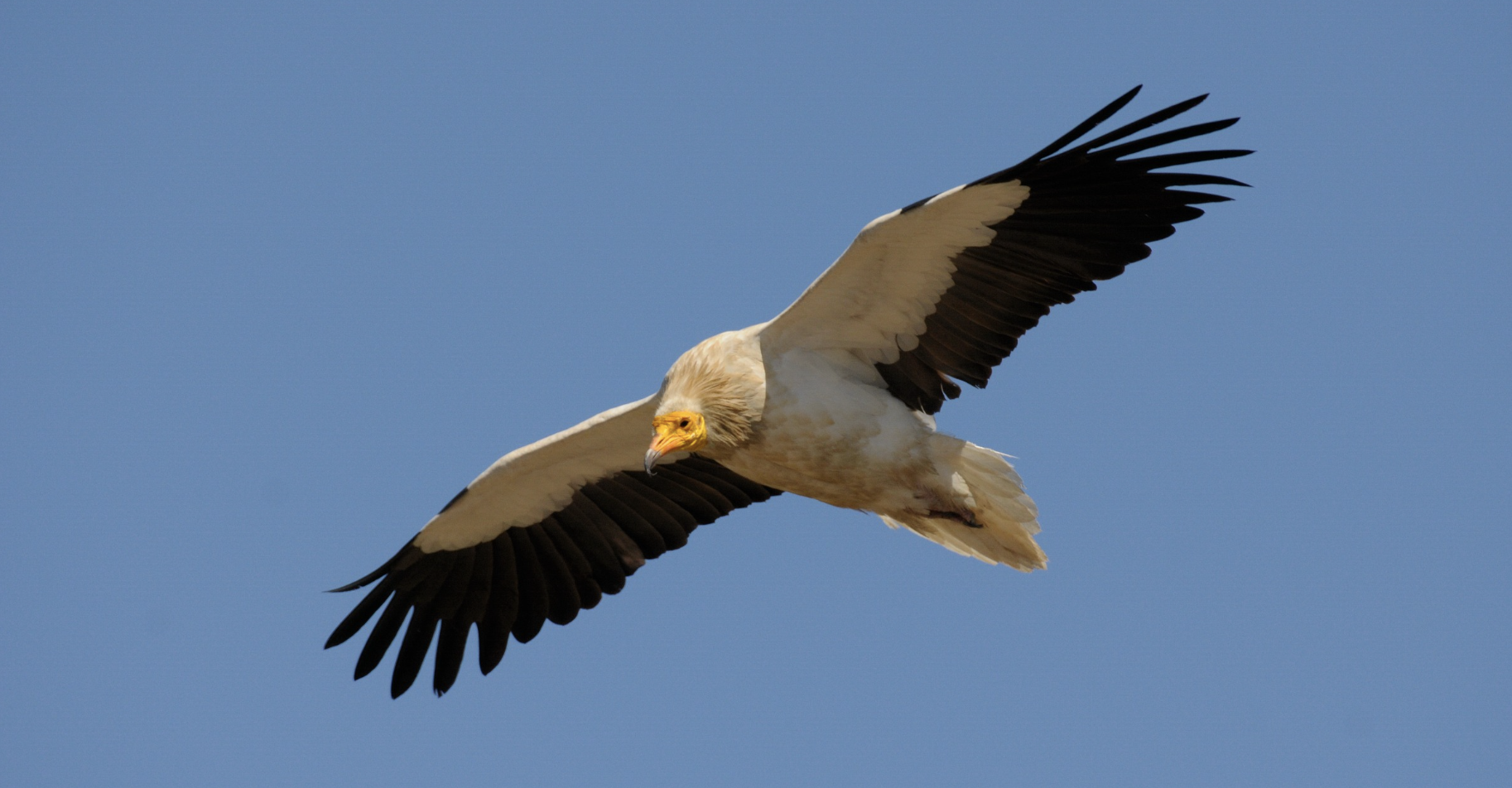Latest vulture science analysed: Movementsof Egyptian vultures in the Middle East and East Africa; the potential impactsof land use change on cinereous vulture occurrence in Spain; stakeholderperceptions of Egyptian vultures; a review of the contribution of predators andscavengers to human well-being; and an article on the association between leadtoxicity and hunting activity in Botswana
The Vulture Conservation Foundation’s staff and board members follow vulture research outputs very closely in order to inform current and future conservation strategies. Summaries of recent articles of interest will regularly be posted in our news for the interest of vulture conservationists, researchers and enthusiasts. You can find the collection of these news here>>
Here we summarize articles on the movements of Egyptian vultures in the Middle East and East Africa; the potential impacts of land use change on cinereous vulture occurrence in Spain; stakeholder perceptions of Egyptian vultures; a review of the contribution of predators and scavengers to human well-being; and an article on the association between lead toxicity and hunting activity in Botswana.
Satellite tracking a wide-ranging endangered vulture species to target conservation actions in the Middle East and East Africa. Buechley et al. 2018. Biodiversity and Conservation, DOI:10.1007/s10531-018-1538-6.
• The authors of this study used satellite tracking technology to study the movements of 16 Egyptian vultures which were captured at municipal waste dumps where they were known to congregate in Turkey, Armenia, Ethiopia and Djibouti in 2012-2015.
• The vultures were tracked for up to 40 consecutive months (average for sub-adults = 15 months; average for adults = 20 months) and migrated 3000-4000 km between their summer ranges in Turkey, Armenia, Georgia, Azerbaijan, Iran and Iraq to their winter ranges in Yemen, Ethiopia, Djibouti, Eritrea, Somalia, Kenya and Sudan.
• Combined summer and winter ranges (estimated from Brownian bridge movement models) of all vultures covered 209,800 and 274,300 km2, respectively, although they concentrated their foraging and roosting activities in only 0.4-1.1% of these areas. There was a high degree of overlap between individuals within these core areas, and resource selection analysis indicated a preference for areas close to highways, power distribution lines and towns. Although these features can provide roost sites (e.g. power pylons) and food (e.g. garbage dumps), they might also increase exposure to threats such as electrocution and dietary toxins.
• This kind of research enables the identification of important areas and resources for vultures and facilitates the targeting of conservation actions such as power line mitigation and measures to control dietary contaminants. The VCF and partners are undertaking similar research through several LIFE projects and near real-time vulture tracking maps can be viewed on our website.

How to fit the distribution of apex scavengers into land-abandonment scenarios? The Cinereous vulture in the Mediterranean biome. Garcia-Baron et al. 2018. Diversity and Distributions, DOI:10.1111/ddi.12743.
• The authors of this study modelled the Cinereous vulture’s nest and foraging site selection to predict the overall availability of suitable habitat for the species across Spain. The authors then made predictions about how different scenarios of changes to socioeconomic conditions and European agricultural policy might influence the occurrence of the species.
• They found that cinereous vultures selected breeding sites with steep slopes and low human presence, whereas foraging areas were characterized by high abundance of European rabbits and wild ungulates, their main food sources.
• While liberal changes to European agricultural policy might increase the rates of “land abandonment” and the area of suitable nesting habitat as mature forest regenerates, this might also reduce the availability of suitable foraging habitat as the abundance of favoured food sources (wild European rabbits) would be expected to decrease. The maintenance of the current European agricultural policy was predicted to result in lower degrees of habitat suitability change.
• Although the authors acknowledge that their predictions are coarse-grained and uncertain, this study highlights the importance of agricultural land use changes for vulture habitat suitability and how such changes can have opposite effects on different aspects of vulture ecology (e.g. nesting versus foraging).

Stakeholders perceptions of the endangered Egyptian vulture: Insights for conservation. Cortéz-Avizanda et al. 2018. Biological Conservation, https://doi.org/10.1016/j.biocon.2017.09.028.
• In the introduction of this article the authors state that, “conservation problems will never be solved by ignoring human dimensions.” Despite this, the human aspect of vulture conservation has received relatively little attention compared to the biology and behaviour of vultures, even though humans benefit from the ecosystem services that they provide (see the O’Bryan et al. article below).
• The goal of this study was to understand the social perceptions of different stakeholders about the conservation of the Egyptian vulture, an emblematic avian scavenger found in relatively high densities in the study area around Bardenas Reales Natural Park in northern Spain.
• The authors interviewed 354 individuals (66 hunters, 36 livestock keepers, 122 farmers and other local inhabitants and 130 tourists) and found that hunters had the highest level of knowledge about Egyptian vulture presence, threatened status and role as a provider of ecosystem services. Livestock keepers recognized the worth of vultures for carcass removal while tourists acknowledged their contribution to other ecosystem services (e.g. biological control).
• The different stakeholders suggested different conservation actions: livestock keepers supported supplementary feeding sites and integrative landscape planning; farmers and other locals suggested promoting the preservation of traditional land use practices; hunters supported additional monitoring and education programs; and tourists suggested restrictions on vehicle access to the protected area and promoting ecotourism.
• The findings will provide valuable information about what kind of conservation actions will gain the support of diverse stakeholder groups, ensuring the long-term protection of Egyptian vultures in a key breeding area.

The contribution of predators and scavengers to human well-being. O’Bryan et al. 2018. Nature Ecology and Evolution, DOI: 10.1038/s41559-017-0421-2.
• The au
thors state that, “predators and scavengers receive surprisingly little recognition for their benefits to humans in the landscapes they share”, despite playing important regulatory roles which can affect human health and well-being through disease mitigation, agricultural production and waste disposal services.
• The authors reviewed examples of these services from across the globe and found several case studies illustrating the importance of vultures for human well-being:
– Waste removal: Egyptian vultures are valued in Yemen for their service of removing livestock and human waste that would otherwise cause water contamination and increase financial costs of other removal methods.
– Livestock carcass removal services: Vultures provide long-term carcass removal services for the livestock industry, leading to savings in man-hours and reduced disease risk in valuable herds (this study was done in the GypConnect area of the Grands Causses). In Spain it is estimated that vultures save $50 million in annual insurance payments by farmers and national administrations by replacing the need for transportation of livestock carcasses to processing facilities.
– Outcompeting animal hosts of human disease: Reducing the spread of rabies by competing with feral dogs in India (this link requires further investigation). When vultures decline other scavenging species (gulls, rates and invasive foxes) often increase, posing risks to human health.
• The authors conclude by calling for researchers and conservationists to work with media, managers and policymakers to highlight the benefits of these species and the need to ensure their long-term conservation. In addition, they call for a move beyond assessing costs and benefits in financial terms towards recognizing their contributions to human health and well-being.

Association between hunting and elevated blood lead levels in the critically endangered African white-backed vulture Gyps africanus. Garbett et al. 2018. Biological Conservation, https://doi.org/10.1016/j.scitotenv.2018.02.220.
• In this study the authors tested for an association between hunting activity and blood lead levels of critically endangered African white-backed vultures in Botswana, southern Africa.
• Of the 566 vultures captured and tested, 30.2% showed elevated blood lead levels (10 to <45 μg/dl) and 2.3% showed subclinical exposure (≥45 μg/dl), with higher blood levels inside the hunting season and within hunting areas compared to outside.
• These results provide evidence to support suggestions that elevated blood lead levels in vultures are associated with recreational hunting, and the authors suggest that lead ammunition should be replaced with non-lead alternatives as soon as possible to protect this rapidly declining groups of birds.
• The VCF supports this call and is working actively to minimise the threat of environmental lead contamination and toxicity to vultures with several actions within some of the LIFE projects we are involved with. These include promoting voluntary testing of non-lead ammunition by local hunters in the French Alps and Cevennes (GYPHELP, GYPCONNECT) to analysing levels of lead in the corpses of dead vultures (LIFE Vultures back to LIFE, LIFE RUPIS).




